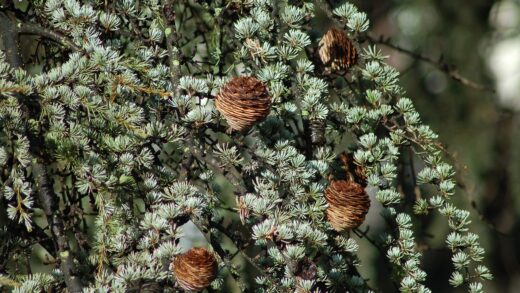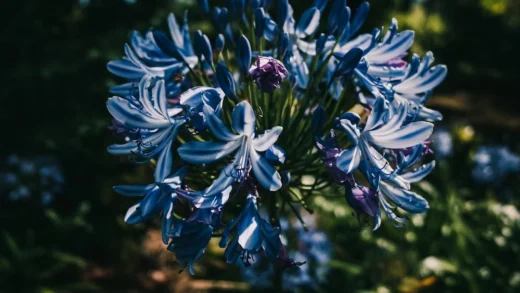The light requirements of the wild tulip are intrinsically linked to the patterns of its native woodland habitat. This is a plant that has evolved to take full advantage of a specific window of opportunity in the forest calendar. Its success hinges on receiving direct, bright sunlight during its critical growth period in early spring, before the canopy of deciduous trees leafs out and casts the forest floor into shade. Understanding and replicating this “spring sun, summer shade” cycle is the single most important factor in choosing a location for these charming wildflowers. Fulfilling this light requirement is essential for vigorous growth, abundant flowering, and the long-term naturalization of the colony.
Unlike many sun-loving perennials that demand full sun all day long throughout the entire growing season, the wild tulip’s needs are more nuanced and change as the year progresses. During its active growth phase from early to mid-spring, it behaves like a full-sun plant, using the bright light to power the photosynthesis needed to produce its flowers and, crucially, to replenish the energy stores in its bulb. It is during this period that the foundation for the next year’s bloom is laid, and insufficient light at this time will result in weak plants and a lack of flowers.
Once flowering is complete and the season moves towards summer, the plant’s light requirements shift dramatically. As the surrounding trees leaf out and the sun becomes more intense, the dappled or full shade of the canopy provides a protective environment for the tulip as it enters dormancy. This summer shade prevents the soil from baking and becoming excessively hot and dry, which could stress or even damage the dormant bulbs resting just below the surface. This period of cool, shady rest is just as important as the period of spring sun.
Therefore, when we consider the light needs of the wild tulip, we must think in terms of the entire year, not just the moment it is in bloom. The ideal location is not one that is sunny all year round, nor one that is shady all year round. It is a location that undergoes a transformation from sunny to shady as the seasons change. By carefully observing the patterns of light and shadow in your garden throughout the year, you can identify the perfect microclimate where this adaptable and beautiful wildflower will truly feel at home.
The role of light in the tulip’s life cycle
Light is the fundamental energy source that drives the entire life cycle of the wild tulip. The process of photosynthesis, which converts light energy into chemical energy in the form of sugars, is the engine of the plant’s growth. In early spring, as the tulip’s leaves emerge, they are essentially solar panels, designed to capture as much of the available sunlight as possible. This energy is used for the immediate tasks of developing strong leaves, a sturdy stem, and the beautiful yellow flower.
More articles on this topic
The importance of light extends far beyond the current season’s flower display. After the flower has faded, the leaves continue their crucial work for several more weeks. During this post-flowering period, all the energy being produced through photosynthesis is directed downwards and stored in the bulb. This process is what “recharges” the bulb, allowing it to survive its summer dormancy and providing the fuel needed to produce a flower the following year. Insufficient light during this critical recharging phase is the most common reason for tulips failing to re-bloom.
The duration and intensity of light also play a role in signaling the plant’s development. The increasing day length and strengthening sun in spring are among the environmental cues that stimulate the bulb to break dormancy and begin its rapid growth. The plant is genetically programmed to complete its entire above-ground life cycle—leafing out, flowering, and storing energy—within the relatively short window of high light availability on the woodland floor. This efficient, compressed life cycle is a brilliant evolutionary adaptation to its environment.
Even after the foliage has died back and the bulb is dormant, light continues to play an indirect role. The shade cast by the summer canopy, as previously mentioned, moderates the soil temperature. This prevents the dormant bulbs from being exposed to the extreme heat and desiccating effects of the direct summer sun. This shady summer rest period protects the delicate flower bud that has already formed inside the bulb, ensuring it remains viable and ready for the following spring. Thus, light, and the seasonal lack thereof, governs every stage of the wild tulip’s existence.
Finding the perfect sun exposure
The ideal planting location for wild tulips is one that offers a dynamic light environment. The classic and most effective site is beneath high-canopied deciduous trees, such as oaks, maples, or hickories. In early spring, before these trees develop their leaves, their bare branches allow plenty of direct sunlight to reach the ground below. This provides the tulips with the high-light conditions they need for their growth and flowering. As spring progresses, the tree’s canopy gradually fills in, transitioning the area to the dappled shade that is perfect for the tulip’s foliage maturation and subsequent dormancy.
More articles on this topic
Another excellent location is on the east or southeast side of a house or other structure. In this position, the plants will receive several hours of direct morning sun, which is bright and effective for photosynthesis but less intense and scorching than the afternoon sun. As the day progresses, the building will cast a shadow over the area, protecting the plants from the harsh heat of the late afternoon. This daily pattern of morning sun and afternoon shade effectively mimics the light conditions of a woodland edge, creating a very favorable environment for wild tulips.
Avoid planting wild tulips in locations that are in deep shade all year round, such as on the north side of a building or under evergreen trees like pines or spruces. In these spots, the plants will not receive enough direct sunlight in the spring to be able to photosynthesize effectively. While they may produce some leaves, they will likely be weak and spindly, and they will almost certainly fail to produce flowers. Consistent, deep shade will cause the colony to decline and eventually die out.
Conversely, a location in full, baking sun all day long, such as in the middle of an open lawn or a south-facing rock garden, is also not ideal. While the tulips might perform well in the spring, the intense heat and sun during the summer can overheat the soil and stress the dormant bulbs. This can lead to dehydration or even cook the bulbs in the ground, reducing their vigor and longevity. The key is to find that “just right” location that provides the crucial balance of sun in the spring and protective shade in the summer.
Light conditions in its native environment
To truly understand the light preferences of the wild tulip, it is instructive to visualize its home in the wild. Imagine a European deciduous forest in early April. The sun is gaining strength in the sky, but the branches of the oak and beech trees are still bare. The forest floor is bathed in a bright, clear light, interrupted only by the thin shadows of the trunks and branches. This is the environment into which the wild tulip emerges, alongside other spring ephemerals like anemones and primroses, all rushing to complete their life cycles in this short-lived window of brightness.
During this period, the light on the forest floor is surprisingly intense. Without the dense leaf canopy, it can be equivalent to full sun exposure for several hours a day. The tulips’ broad leaves are adapted to maximize the capture of this available light. They spread out to catch the sun’s rays, working efficiently to produce the energy needed for the plant’s rapid growth. This high-light period is the powerhouse phase of the tulip’s year, and its entire survival strategy is built around capitalizing on it.
By late May or early June, the scene has transformed completely. The tree canopy has fully unfurled, creating a dense ceiling of green that intercepts the majority of the direct sunlight. The light that now reaches the forest floor is a soft, dappled, and cool green light, with a much lower intensity. By this time, the wild tulip’s flowers have faded, and its leaves are beginning to yellow. The plant has finished its main energy production for the year and is preparing for dormancy, so this reduction in light is not detrimental; in fact, it is beneficial.
This deep summer shade provides a crucial service. It keeps the forest floor relatively cool and prevents the soil from drying out too quickly, even during dry spells. This moderated environment protects the dormant tulip bulbs from the stress of excessive heat. It also helps to suppress the growth of more aggressive, sun-loving summer plants that could otherwise compete with and crowd out the tulip colony. The seasonal shift from bright sun to deep shade is the defining characteristic of the wild tulip’s preferred light regime.
Adapting to different light levels in the garden
While the ideal “spring sun, summer shade” scenario is the gold standard, wild tulips exhibit a degree of adaptability and can often succeed in less-than-perfect light conditions with some thoughtful management. For instance, if your garden primarily offers full sun throughout the year, you can still create a suitable environment. The key is to ensure the soil is protected from overheating in the summer. This can be achieved by planting the tulips amongst shallow-rooted perennials or annuals that will emerge later in the season and provide a living groundcover to shade the soil.
In a location that receives full sun, applying a thick layer of organic mulch after the tulip foliage has died back is also crucial. A 5-7 centimeter (2-3 inch) layer of shredded bark, compost, or another light-colored mulch will help to insulate the soil. This prevents the sun from baking the ground and keeps the dormant bulbs at a more stable and cooler temperature. The mulch also helps to retain a base level of moisture in the deeper soil layers, preventing the bulbs from completely desiccating during prolonged droughts.
If your garden is on the shadier side, but not in deep, year-round shade, you may still be able to cultivate wild tulips successfully. A spot with bright, open shade or one that receives at least three to four hours of direct sunlight in the spring can be sufficient for flowering. To maximize the available light in such a location, you can selectively prune the lower branches of any overhanging trees or large shrubs. This technique, known as “limbing up,” can let in significantly more low-angled morning or late afternoon sun in the spring without sacrificing the benefits of summer shade.
Ultimately, the best way to determine if a location is suitable is to observe and experiment. Plant a small test group of bulbs in a location you think might work. Watch them closely for a few seasons. If they produce healthy green leaves but fail to flower, it is a strong indication that they are not receiving enough spring sunlight. If they flower well the first year but then decline over subsequent years, it may also be a light issue. The plants’ performance will be your most reliable guide to whether you have found the right balance of light and shade in your unique garden setting.


















